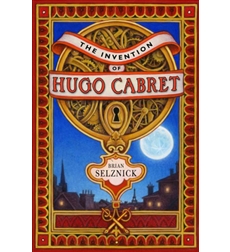Rhythm, Rhymes, and Gzonks
 Though we remember Dr. Seuss for his narrative books, such as Horton Hears a Who and The Cat in the Hat, he also wrote a number of plotless picture books that relied on the sheer power of accumulating nonsense. These include If I Ran the Circus, If I Ran the Zoo, and the venerable And to Think That I Saw It on Mulberry Street.
Though we remember Dr. Seuss for his narrative books, such as Horton Hears a Who and The Cat in the Hat, he also wrote a number of plotless picture books that relied on the sheer power of accumulating nonsense. These include If I Ran the Circus, If I Ran the Zoo, and the venerable And to Think That I Saw It on Mulberry Street.
In the latter category, my favorite was probably On Beyond Zebra!, which took the normal form of an alphabet book but discussed letters no other author had used. (Other alphabet books I recall vividly from childhood were those by Richard Scarry, P. L. Travers, and H. A. and Margaret Rey.)
Tony DiTerlizzi plays similar tricks with the alphabet book form in G Is for One Gzonk! Each letter of the alphabet introduces a creature not found anywhere else, such as the eponymous gzonk. The pages show of DiTerlizzi's creature-creating talent, honed from illustrating Magic cards and co-creating the Spiderwick series.
The young bespectacled stand-in for the author-illustrator vows to make his alphabet different by not pointing out anything else on the page that begins with the crucial letter. Though he can't resist ponting out what he's not pointing out. And then some Woos, who resemble hovering water balloons with numbers attached, keep invading the pages, trying to turn the alphabet book into a number book. Their contributions to the text appear in a different color and type style from the narrator's.
With all the arguments and twists, G is for Gzonk! requires 80 pages to get through twenty-six letters of the alphabet and one number. That's an unusually large investment for a picture-book publisher, reflecting DiTerlizzi's success with Spiderwick and The Spider and the Fly.
Unfortunately, the book's rhyming text is just as irregular as its alphabet, and less intentionally. As I always say about stories in verse, rhyme is easy; rhythm is hard. Here are the book's first two stanzas, with the naturally emphasized syllables in capital letters: HelLO! And WELcome TO my BOOK!
The lines never settle into a steady rhythm, iambic or otherwise. Compare the bumpy patterns above to "and to THINK that I SAW it on MULberry STREET." The most solidly metrical lines, such as "(as soon you'll plainly see)," add little to the text's meaning.
A BOOK THOUGHT up by ME.
I am the AUTHor and ARTist
(as SOON you'll PLAINly SEE)
of this ALphaBET of CREACHlings!
A TWENty-six-LETter menAGerIE!
But I MUST conFESS,
as you MAY have GUESSED,
it WON'T teach you A b C.
Dr. Seuss's nonsense texts showed his mastery of language, but I fear Gzonk's verse, like the Woos, show language overwhelming the author.


































